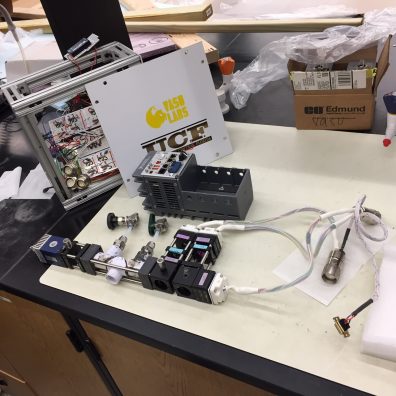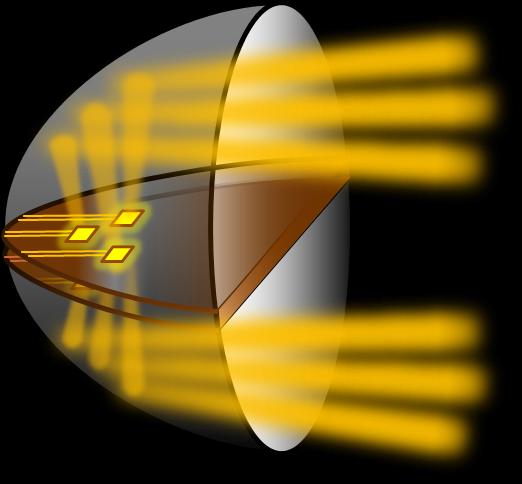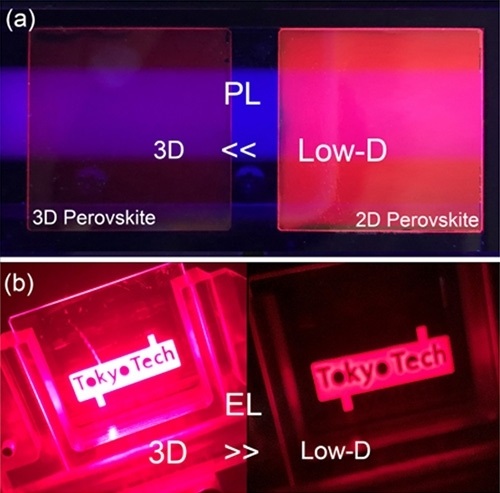October 20, 2016
By Bernard Wilchusky
A UCF research group is working to pioneer the detection of dangerous gases and leaks on spacecraft using low-cost LEDs.
Led by Engineering Assistant Professor Subith Vasu, his 17-member team is working closely with the Federal Aviation Administration’s Center of Excellence for Commercial Space Transportation to prove the light-emitting diode technology is able to effectively detect dangerous gases while being resilient enough to survive the rigors of space travel. As part of his research Vasu works with mechanical and aerospace engineering faculty and students, UCF’s Center for the Advanced Turbomachinery and Energy Center led by Jayanta Kapat and the Florida Space Institute.
The FAA selected nine universities to be part of the Center for Excellence team. As one of those nine universities, UCF will receive $2 million each year for the program’s decade-long term.
“They invest in technologies they or private companies can use later to improve the safety of space travel,” Vasu said. “Commercial space transportation is going to be a huge business, and the FAA wants to be prepared for it. They’re the agency worried about public safety … if there’s an accident, they want to be prepared technologically and policywise, so they’re investing in research.”
Traditionally, gas and leak detection has utilized lasers. Potentially life-threatening molecules, such as carbon dioxide or carbon monoxide, have particular absorption spectra. When they interact with specific wavelengths of light, they absorb that light and prevent it from traveling onward. A receptor is able to recognize that it’s receiving less light, indicating that the concentration of a specific gas in the environment has increased — or, in the case of leaks, how a concentration has decreased.
“It’s a spectroscopic-based technology,” Vasu said. “LEDs emit light at certain wavelengths, and we can correlate that wavelength to certain types of molecules.”
The LEDs use less power, are less prone to breakage due to having fewer parts, and are lighter — all considerations of great importance in the high-cost, high-stress environment of space travel. Thanks to evolutions in the designs of LEDs, they are able to emit light in very narrow frequency bands, much like lasers.
“Anything that flies, you have to optimize for weight, you have to optimize for power and you have to increase its robustness,” Vasu said. “Lasers are useful on the ground, but we realized that LEDs can be used instead of lasers: They are cheaper, they are more rugged, they aren’t really affected by the environment, and they have low power consumption. Whenever you’re sending something into space, you want something light that doesn’t use much power.”
But the journey from concept to space-ready product isn’t easy or inexpensive. Each Space Shuttle mission costs about $450 million or approximately $10,000 per pound of cargo. Companies such as SpaceX, run by Elon Musk, or Blue Origin, run by Jeff Bezos, hope to reduce that cost to about $1,000 per pound.
“Eventually, we want to take this sensor system to the International Space Station or an actual space shuttle. But to reach there, it’s not like you prove something in a lab and you automatically apply it to a rocket. They want you to go through these proving steps that increase in cost,” Vasu said. “Actual flights are millions of dollars, so you don’t want to make a sensor that gets put in the rocket and breaks right away.”
That process involves several stages of expensive test methodologies. The first is the proof of concept: Vasu’s team built a working model of its device, a series of LED lights whose emissions are reflected by a series of mirrors through a chamber of gas and onto a detector on the chamber’s opposite side.
Next, the team had to prove that its model would survive the kind of low-pressure, low-temperature environment found in the upper atmosphere and outer space. They utilized an environmental vacuum chamber to lower both the pressure and temperature of the device to test its durability. During this stage, Vasu said the material used to make the lense system of the LEDs shattered, which required them to source a different type of material for their optics.
The latest stage was undertaken Sept. 1 in New Mexico, when the team launched a specially designed payload into the upper atmosphere by way of a NASA high-altitude balloon, the penultimate step before testing the device on an actual rocket. The balloon, which was designed at NASA’s Columbia Scientific Balloon Facility in Texas, was able to reach heights upward of 120,000 feet, approximating some of the conditions of spaceflight.
“Each system that we’re designing for has unique constraints,” said Michael Villar, a graduate student and research assistant. “Going forward, we want to shrink it down to its final, miniaturized size to test.”
Akshita Parupalli, a senior aerospace engineering major and an undergraduate researcher in VASU LAB, said she enjoyed working on the project.
“The hands-on research opportunity has been instrumental in showing me how to apply what I’m learning in the classroom,” she said. “It’s essential that we as students learn not only theory, but how to apply it and Dr. Vasu’s research is a great fit for that.”















